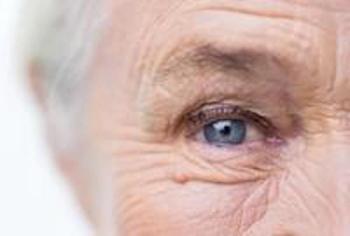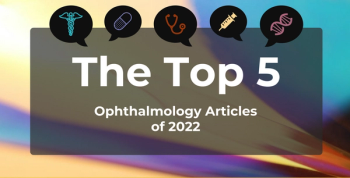
Ophthalmology
Latest News
Latest Videos

CME Content
More News

Pegcetacoplan was approved by the FDA to treat geographic atrophy (GA), providing a treatment option for patients who previously had none, explained Eleonora Lad, MD, PhD, associate professor of ophthalmology, Duke University.

Veeral Sheth, MD, MBA, FACS discusses re-treatment in patients with wet AMD who have previously failed an anti-VEGF therapy.

Dr Coney expands on the role and impact of approved label dosing of faricimab.

A recent review found that the performance of the Amsler grid test was not at a level that was recommended for detecting early or dry age-related macular degeneration (AMD).

The Pediatric Eye Disease Investigator Group collected data on children who had lensectomy prior to age 13 years in a 5-year span.

Richard Allen, MD, PhD, FACS, professor at Baylor College of Medicine, reviewed the challenges of oculoplastic surgery in pediatric patients.

Key opinion leaders discuss faricimab, its impact on the treatment landscape for wet AMD/DME, and what payers should look for when considering formulary positioning or utilization-management strategies.

Dr Coney discusses the variability of frequency dosing with anti-VEGF therapy in patients with wet AMD and DME, and Dr Sheth expands on Ang-2 and its contribution to the development of vascular instability in wet AMD.

A review found that visual impairment is common in older adults with dementia and associated with negative effects.

Geographic atrophy is a leading cause of blindness. The new approval will help to fill an unmet need for patients.

Dr Sheth discusses his insights on anti-VEGF therapy that he has noticed in the treatment of wet AMD over the last decade, and Caesar Luo, MD, FASRS, FACS shares his insight on new treatment options and their impact on patient access and cost considerations.

Dr Coney and Veeral Sheth, MD, MBA, FACS, FASRS, discuss treatment selection, treatment goals, and unmet needs for patients diagnosed with wet AMD and DME.

A nightly use of 0.05% atropine eyedrops resulted in a lower incidence of myopia compared with placebo.

Michael N. Cohen, MD, FAAO, retinal surgeon at Wills Eye Hospital in Philadephia and Mid Atlantic Retina, speaks about the future of gene therapy and the accessibility and availability of these therapies moving forward.

Joseph Coney, MD, FASRS, FACS, discusses the difference between population groups in age-related macular degeneration (AMD) and diabetic macular edema (DME)

Disparities in access to pediatric ophthalmological care is associated with lower socioeconomic status.

A recent study has found that the prevalence of vision impairment in US adults 71 years and older was higher in 2021 compared with prior estimates.

Retinal nerve fiber layer (RNFL) thickness has been independently associated with incident cardiovascular disease risks in a new analysis that utilized data from 2 international databases.

Patients who took hydroxychloroquine had an overall risk of hydroxychloroquine retinopathy of 8.6% after 15 years.

Retinal vasculature in peripheral regions of the retina differed in patients with Alzheimer dementia and mild cognitive impairment.

Diagnosing ocular surface diseases could be made easier as artificial intelligence (AI) screening improves.

A clinical trial found that the prevalence of age-related macular degeneration (AMD) was not associated with the use of metformin.

The top 5 most-read content in ophthalmology for 2022 focused on the relationship between aging and visual field reliability, telehealth eye care visits, the link between COVID-19 and dry eye disease, and more.

Coverage of the annual meeting of the American Academy of Ophthalmology (AAO) included interviews with experts on thyroid eye disease and anti–vascular endothelial growth factor therapy, as well as breaking research.

A new study has found that prolonged screen time may cause increased symptoms of dry eye disease (DED) in children.













































